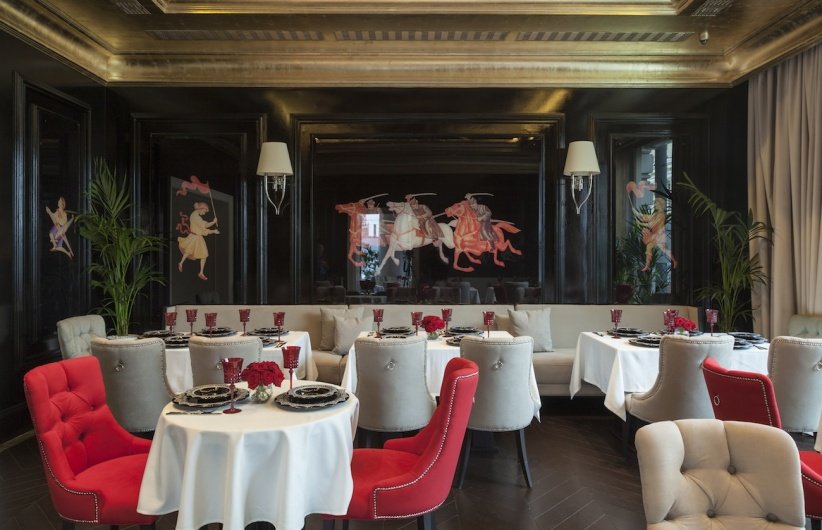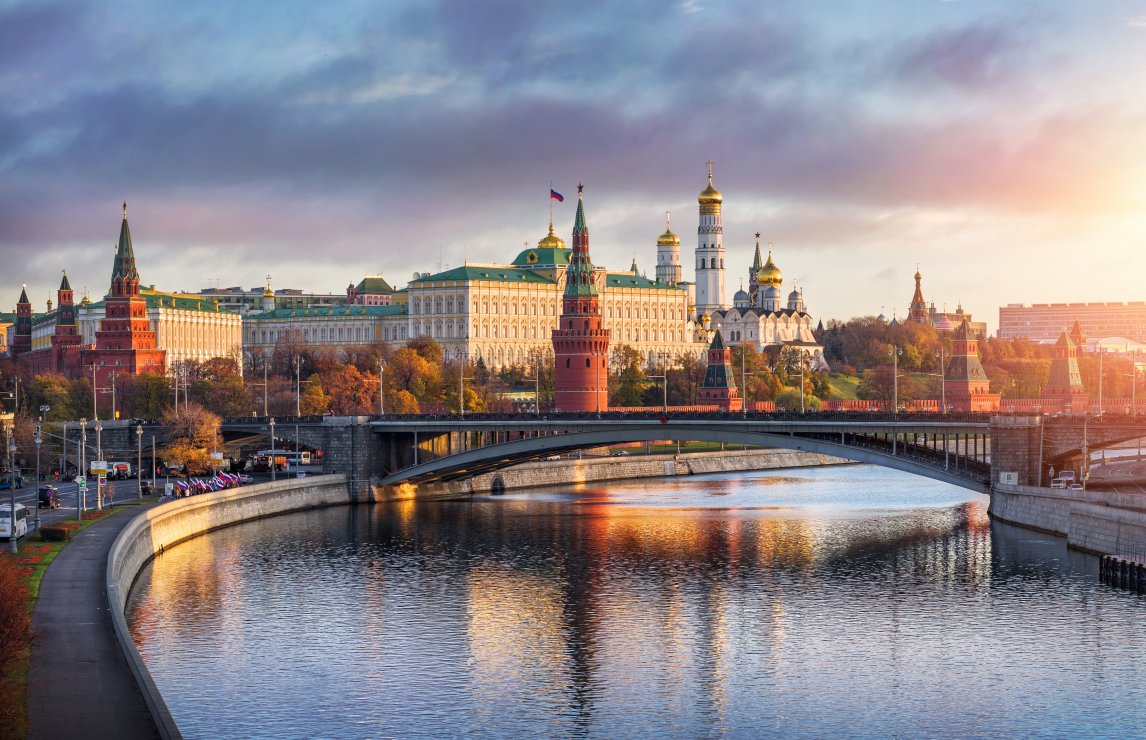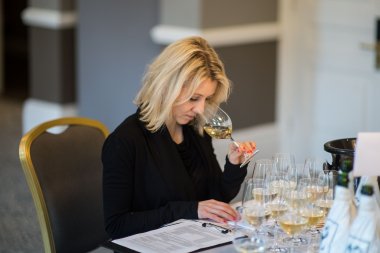IWSC Market Insight: the Russian wine market
There are reasons Russia isn’t the world’s biggest wine market, and they’re mainly political and economic. But as Russians re-discover their love of wine, in our first IWSC Market Insight we examine how the Russian wine market works, and how you can get into it
• Introduction
• Wines, not spirits
• Importers
• The retailers' share
• Specialised wine and spirits retailers
• Tax and excise: the cost of importing wine
• Hotels, Restaurants, Cafés (HoReCa)
• The new wine consumer
• Trends and wines that drive consumer habits
• Market share - what are Russians drinking?
• Drop in value
• Domestic wines
• COVID19, oil prices and the economy
• Anton Moiseenko
Introduction
The phrase ‘Russian wine market’ might sound incongruous, but Russians are wine drinkers both historically and by nature. It was for Tsar Alexander II, after all, that Louis Roederer developed Cristal in 1876. This isn’t to say that Russians have been drinking fine Champagne for 150 years, but the westernisation of the elites and the middle class started by Peter the Great hasn’t been slowed by 70 years of communist rule, nor by Vladimir Putin. No, the reasons Russia isn’t the world’s leading wine consumer are not cultural. Rather it is political and economic realities that have hampered the development of wine culture and consumption in Russia.
Some wine producers continue to think Russia is a magical land where bottles sell themselves but the reality is strikingly different. There are wineries, though, which have been doing great business whether their focus is on hotels, restaurants and cafés (the HoReCa segment), or the off-trade: specialised stores or big retail. As a result, organisations such as Wines of Portugal and Wines of Germany have seen an increase in the average bottle price sold in Russia and decided to increase their promotional activity in 2018-2019.
Wines, not spirits
One paradox of the Russian market is that it is wines, not spirits, that have shown the greater growth over the last few years. According to the chairman of the Beluga Group, vodka sales in Russia have halved in the last 15 years. Deloitte’s 2019 CIS report shows around 60% of Russians favour wine, while only 36% prefer vodka.
Alcohol sales in Russia are strictly regulated by the Unified State Automated Information System (EGAIS), which requires every wine bottle to carry an excise duty stamp (so preventing the sending of samples). EGAIS is controlled by the alcohol market regulation body (RAR). In common with many government systems, it’s regarded with a good deal of suspicion – many market players openly consider it corrupt.
There is very little free flow of information within the Russian market. Wine advertising was banned in 2013 both online and offline. The government, however, is keen to push local production – especially from Crimea – so the legislation has been softened and now wine advertising for Russian wines is theoretically possible, if not widely practised. Social media users and wine bloggers remain relatively unchecked, no matter what their user base is.
Importers
Overall there are around 60 notable specialised importers and distributors in Russia. Despite their ‘enigmatic’ Russian ways (as Winston Churchill said), importers play the same role in Russia as in the other parts of the wine world. A great importer with a professional and passionate team can do great things for a winery; a lazy or unfocussed importer will fail.
In most cases the importer distributes across the entire country: there are regional operators but they are rare. Agreements mostly suggest exclusivity, but big producers with a substantial number of SKUs often share their portfolios across several importers. Most distributors established in the 1990s and 2000s are still operating, but new, smaller players have also appeared as the market matures and trends evolve.
“Classic” importer-distributors (for example Fort, Simple, Alianta, MBG, DP-Trade, Marine Express, Vintage-M, Luding and others) started in the 1990s and have been instrumental in developing the market, educating people about wine and bringing big international brands to Russia. They carry a wide range of wines and spirits; some, like Luding, are more focused on entry-level offerings, while others, like DP-Trade, work with more upscale wines. These operators deal with all sales channels.
A number of spirits producers – for example Ladoga in St Petersburg and Beluga in Moscow – have also developed wine portfolios. Some companies that started as spirits distribution businesses (like AST) play an important role in the wine scene and have developed strong and diverse wine portfolios.
In the 2000s a new wave of companies appeared and quickly claimed market share with serious educational programmes, focussing on sommeliers and catering to a younger clientele: Vinoterra, Grape, L-Wine, Classica, Vinicom are a handful of examples. Then there are small, niche players targeting new and dynamic market segments like grower Champagnes and biodynamic and natural wines. Many of them are start-ups run by former employees of bigger companies. Two examples are Real Authentic Wine, focused on biodynamic and natural wine, and Wine & Only for "handmade” wines.
The retailers’ share
Retail accounts for the lion’s share of the volume side of wine sales: in 2019 food and alcohol made up one third (31%) of Russian household expenses (Deloitte CIS report, 2019). And in recent years, retailers have been gradually moving in on importers’ territory, cutting them out of the supply chain and taking care of their own imports.
Most big international retailers haven’t managed to get a foothold in Russia — there is no Wal-Mart or Carrefour here, although the French chain Auchanand the German Metro Cash & Carry are the two international brands that seem to be doing a pretty good job in moving volumes across Russia.The biggest national retail group is X5 Retail with chains like Pyaterochka, Perekrestok and Carousel, but there are other big players including Lenta, Magnit and Diksy. Wineries normally don’t deal with them directly, unless they are a very big (and mostly entry-level) producer. Top-tier retail is limited to Moscow and St Petersburg - the Azbuka Vkusa chain is the strongest player in this category, with no real competition. They, of course, carefully curate their own wine portfolio.
Specialised wine and spirits retailers
There are specialised wine and spirits retailers: some belong to wine importers, but the biggest are independent entities. The development of chains carrying affordable goods shows that the Russian consumer likes shopping close to home. The main players are Krasnoye & Beloye (“Red & White”, around 5,000 retail outlets), Bristol (2500 retail outlets), Otdokhni(around 200 outlets) and Aromatny Mir (“Aromatic World”, around 500 outlets).
Price is, of course, the major factor with retailers on this scale, but quality has been improving over the years. In wine terms it can mean wines become drier and more sophisticated and we are seeing more regional styles (like wines from La Mancha in Spain or inexpensive Gruner Veltliners from Austria) making their way onto the shelves.
Tax and excise: the cost of importing wine
The Russian government has been steadily increasing taxes despite the demonstrably obvious logic that if you want to persuade the population to move from spirits to wine, you need to lower excise duties for quality wines. Wine importers have been unsuccessful in fighting this, just as they have been unable to oppose the advertising ban of 2013, the online wine trading ban or other unpopular measures.
Up to the end of 2019 the excise duty was around €0.26 per litre (for still wines), but from 1 January 2020 it was almost doubled to €0.44 per litre. The excise duty for sparkling wines is much higher (it was also raised, from €0.51 to €0.57 per litre). Both still and sparkling wine duties are expected to be raised further in years to come. There’s also a 12.5% customs duty and 20% VAT.
Importers’ mark-ups vary greatly depending on the nature of the business and its sales channels; HoReCa, and private client businesses might see 400-500% mark-ups, while off-trade specialists are more moderate, going as low as 40-60%. This is not to say there’s nothing in between, but most Russian wine importers prefer to over-inflate their price lists in order to be able to give impressive-looking discounts later; and Russian consumers love discounts.
Hotels, Restaurants, Cafés (HoReCa)
Despite the crises that hit Russia on a regular basis, the restaurant segment has been dynamic for several years. The 2015 anti-sanctions that cut the country off from important EU produce (cheese and meat for example) stimulated local farming and led to the re-birth of interest in Russian cuisine. Restaurants in Moscow and St Petersburg have been gaining serious international reputations – two Moscow restaurants, White Rabbit and Twins Garden, were at 13 and 19 respectively in the “World’s 50 Best Restaurants” list in 2019.
The on-premise market is highly concentrated in Russia’s two most outward-looking cities, Moscow and St Petersburg. Both are dominated by restaurant groups, such as the long-established Novikov Group, Dellos Group, Ginza Group, Alexander Rappoport’s restaurants (Dr Zhivago, Moscow, pictured), catering for a 45+ age group. Others include the young and ambitious White Rabbit Family, Perelman People, Twins Group and Probka Family.
Freedom within constraint is the best way to describe the management of wine lists in Russian restaurants. Most groups have a chef-sommelier overseeing the overall concept of the group — Ginza, Dellos, Perelman and Twins are managed this way. Others, like Novikov Group and Rappoport, allow individual restaurants more autonomy. Their wine lists carry the names you will likely find in major international cities.
There’s definitely wine life outside of Moscow and St Petersburg, albeit on a lesser scale. Restaurants in the bigger cities of Ekaterinburg, Rostov-on-Don, Novosibirsk and Kazan are booming, and their passion for wine is clear. The former Olympic capital Sochi also seems to be waking up in terms of new openings.
The new wine consumer
Statistics on wine consumption provided without any context can be misleading. In its 2019 report, Deloitte says a typical alcohol consumer is “at least of average financial standing”. Wine, it turns out, is one of the major alcoholic drinks consumed by 59% of Russians; beer is 63%, followed by grape spirits (45%), sparkling wine (41%), vodka (36%) and whisky (25%). Women tend to prefer wine, with 69% of them consuming it regularly.
Trends and wines that drive consumer habits
Women tend to have as much say in choosing wine as men. In fact, wine has always been considered a feminine drink here. It’s always been assumed that men drink vodka, but that is changing. With the generational change, wine consumers are getting younger: people under 35 are totally into wine, while the older generation (50+) tends to favour spirits.
Women remain the major consumers of wine in Russia. Step inside one of Moscow’s many wine bars and you will be surprised by the number of young women in there; retail data bears that out. In terms of spending, though, men tend to outdo women by around 20%: men are much more exposed to gifting situations and negotiations that require them to dine with business partners and clients. The average Russian spends around RUR800 ($13) on alcohol per purchase and does so around five times a month, spending $780 annually. High income respondents, unsurprisingly, spend more (Deloitte CIS, 2019).
As most people in the wine trade will tell you, Russian consumers at large are very sensitive to discounting and often buy only on promotion dates or on special occasions, such as New Year sales and Black Friday. As for higher priced regions such as Burgundy, Priorat and Jura, the reality is, while these wines are selling well in Moscow’s restaurants, their price points are far beyond the reach of the mass consumer. The majority of sales are in cheaper, stronger, richer, sweeter and more obvious wines beloved by the ordinary Russians.
Market share – what are Russians drinking?
Due to market restraints and lack of information, wine knowledge remains poor among the general public. Yet the readiness to try new wines from different regions has increased due to the change in the rouble’s buying power. From Spain’s La Mancha to Portugal’s Vinho Verde, New Zealand Sauvignon Blanc to Cava, Prosecco to affordable German Rieslings, Russians are experimenting more than ever.
Drop in value
Italy and France have been market leaders for a long time, but the average price of a bottle is dropping. By 2019, Italy, France and Germany had lost significant import share in value compared to their competitors: Spain, Portugal, and Georgia. The New World is stagnating: Australian, South African, Chilean, and – especially – the US and Argentina have lost market share significantly in the past four years.
The most impressive growth has come from those territories with a traditional cultural link to Russia. These countries (Italy, Spain, France are good examples) supply what is still a solid market for sweeter wines. But dry wine styles have been rising in popularity due to increased restaurant activity and better penetration of wine into the HoReCa segment in general. This trend isn’t huge, but it’s there, even infiltrating regional cities like Rostov-on-Don, Novosibirsk and Vladivostok, far away from the capital. Biodynamic and natural wines are finding a niche as well, mainly in Moscow and Saint-Petersburg.
Portugal, despite its grapes’ names being unpronounceable to most Russians, is making a strong comeback, with almost double the value sales in 2017 compared to 2013. The secret is attractive pricing, great quality, ease of drinking and the recognizable brandof Vinho Verde. Sales of quality Spanish wines are also on the rise.
In supermarkets wine prices range from €3 to €100 and upwards. Price has and will remain the decisive factor, even for quality wines.
Domestic wines
With the annexation of Crimea in 2014 Russia gained access to the major wine source in the region. Crimea has a long and honourable tradition of winemaking and it has pushed Russia to produce more and better wine, for both political and patriotic reasons. A number of projects in Crimea have attracted government investment and there has been an influx of European oenological experience and consultants, mostly Italian and French like Riccardo Cotarella and Patrick Leon.
While Russia’s aim is to showcase the efficiency of the so-called “import-substitution” policy, quality Russian wine remains scarce. It is dependent on the supplies of vineyard management tools, machinery and know-how from abroad. This results in higher prices for a few quality Russian wines, which remain a hard sell in restaurants and attract more attention from tourists than locals. Russian wines like Phantom (produced in the South of Russia, but not in Crimea) command €150 a bottle; most normal consumers would consider them way out of their price range.
Domestic wine production is based mostly on international varieties and, to a lesser extent, on indigenous grapes such as Krasnostop Zolotovsky and Sibirkovy,and, in big part, on imported bulk wine. The collapsing rouble doubled the price of imported wine in 2014-2015 which led to an increased demand for Russian wines, although the quality of mass-produced wines remains the same.
Russian sparkling wines have always been an important category, with two companies — Abrau Durso and Sparkling Wines Company — producing 50% of all the wine in the market. Most Russian sparkling wine contains imported bulk wine - Russian vineyards can’t meet the demand. Low-segment mass-market Russian sparkling wines start at shelf prices of around €4.
Some of Russia’s medium and small producers have a good reputation (Konstantin Dzitoev wines, for example) though they are generally of more interest to tourists. There have been efforts to improve the conditions of smaller producers (wine production licensing is expensive and bureaucratic), but their fate remains uncertain: dependence on imported equipment and the great distance from Moscow add to the final price.
COVID19, oil prices and the economy
The Russian wine market is a victim of the political system and, consequently, depends on the country’s economy, and on oil prices. The Russian palate isn’t in any way different from that of Italians or, say, Swedes. Exchange rate fluctuations and economic instability have led to dramatic drops in demand in a number of years – most notably, during the 2008 global crisis and the turmoil in Crimea since 2014
If the COVID-19 pandemic and the recent oil price drop are bad for the global wine business, it’s even worse for Russia. This year is going to be a turning point – good for some, bad for most. While wine bars and restaurants struggle to survive, retailers and importers who supply private clients cater for the urge to stockpile wine – both for lockdown and in case of an increase in prices in reaction to the rouble weakening. Wine drinkers will have a good deal more choice and will become more price-driven – not a bad thing in itself. For economic reasons, there will be fewer of them, too. There may well be an increase in wine and spirits sales if the government finally decides to legalise online wine sales (talks have been ongoing for several years).
The worldwide uncertainty about the future strongly influences the Russian wine market. As per Deloitte’s report, 74 per cent of Russians consider alcohol the first item to sacrifice when a crisis hits.
As of mid-June 2020 the country is being slowly unlocked from COVID-19 measures; restaurants are bound to re-open by the end of the month (with strict precautions, obviously until the vaccine is in place). In any case, the Russian wine market is awakening to the new realities of the new market. The good news is — as past crises show — the industry will find a way to adapt.
Anton Moiseenko

Anton Moiseenko is a journalist and wine communicator based in Moscow. He has been covering the Russian wine market for some years, writing for titles like Meininger’s Wine Business International, Harpers Wine and Spirit, The Drinks Business, Il Corriere Vinicolo and other trade journals. He is also involved in wine communications for trade clients in Russia and abroad. His Russian-language website By-The-Glass.ru is aimed at trade professionals and sommeliers in Russia, Ukraine, Belarus and other parts of the Russian-speaking world.



